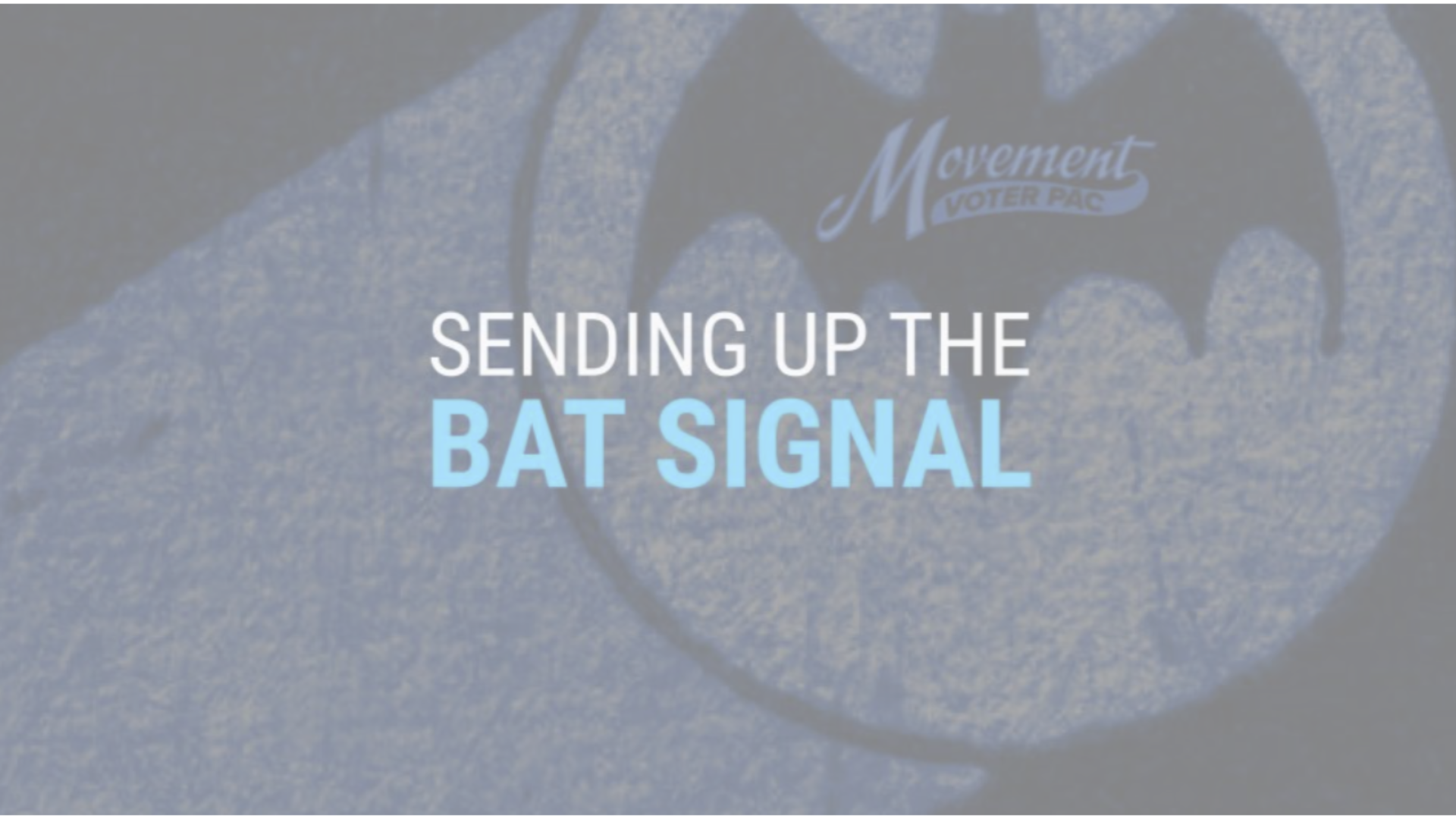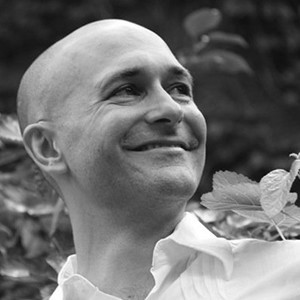In September 2023, Executive Director of Movement Voter PAC, Billy Wimsatt, penned an incredibly moving letter about the current state of funding for voter engagement. Since then, NCRP has shared this “Bat Signal” far and wide.
NCRP Field Manager Trey Gibson, a former civic engagement organizer in North Carolina, agrees. As she wrote soon after in Fund Organizing Like Our Democracy Depends on It…Because It Does, foundations and high net worth donors must focus on investing in communities, not just issues.
Whether it is an election year or not, funding organizers is as urgent and necessary as ever.
Pouring in from their own unique experiences in the world of democracy, Gibson and Wimsatt sat down to talk about just what has happened since the memo went live and where progressive funder organizers can go from there.
Below is their conversation in its entirety.
Trey Gibson: Our view is that your memo is such an important piece and I’d love to know how it has been received since you released it. Have you noticed any questions or changes from donors in response to the memo since it dropped?
Billy Wimsatt: Wow – thank you so much for reading it and asking!
I’ve been really encouraged by the response. The good news is that a few handfuls of donors really took the message to heart and are making their biggest donations ever – including a handful of heroic people who are really stretching themselves and giving at the million-dollar level.
I just heard from another unexpected person who wants to give a million dollars today! Hopefully this will be a trend!
Seeing donors who were typically giving $1,000 or $25,000 donors decide to give $1 million or some other number that is truly a stretch for them has been incredibly inspiring. And there were lots of other people who increased their giving substantially (eg from $50,000 to $100,000) and were intentional about giving early in January – that was great to see.
The bad news is that we still have a loooong way to go to get the frontline electoral organizers hundreds of millions of dollars they need to do their work.
We need a movement of at least a few hundred seven-figure donors to “see the light” from the Bat Signal and make the decision – with their families and their financial advisors – to make their largest donation ever. And to understand clearly that in historical terms, 2024 really is that moment we have all been waiting for. It’s time to stop being reluctant bystanders, to strap on our superhero capes, and become major protagonists in the 2024 story.
In short, we need many more people to read it, share it, get together with their folks, and ask themselves the question: “What is the biggest thing we can do – individually and as a group?” in terms of donating and inviting others to join us.
One of the other most encouraging trends we have seen is people inviting their friends and family. People are getting their folks together to do a “Zoom Salon” to discuss this idea with a small group of friends or networks. That’s how we’re going to do this – through hundreds of smaller conversations that add up to the hundreds of millions of dollars that are needed.
We can do this – but we gotta do it fast!
Trey Gibson: Why do you think progressive donors didn’t give to grassroots voter engagement organizations in 2023 at the same level that they did leading into the last two elections?
Billy Wimsatt: I think it was a confluence of reasons – none of which are surprising:
One, people were exhausted and depressed from the never-ending pandemic.
Two, people are exhausted and depressed by politics.
Three, our inboxes are overloaded with incessant spammy political fundraising emails.
Four, the economy and the market were bumpy – which contributed to a feeling of uncertainty – and a lot of people’s financial advisors told them not to sell stocks or give.
Five, people were caught up in the political circus and getting distracted by the twists and turns of the news cycle instead of thinking about how we can be strategic as donors and funders regardless of what happens in the news cycle.
Six, most donors always take a break during on “off years” – which we know, of course, are actually the crucial years for building the infrastructure we need during the big election years.
And then when the horrors of October 7th happened. Everyone was stunned and in huge pain and fear. It divided our communities and suddenly we had the coalition of people who weren’t going to donate, people who weren’t going to organize, and people who weren’t going to vote… which is not a winning combination.
We have to find a way to resolve this as soon as possible so that we can pivot and all work together to secure our democracy at home. I’m seeing some promising signs. We are in the most acute phase of the crisis right now. And my hope is that we can take steps to de-escalate fast enough to bring the family back together before the fall.
The other thing that a lot of groups are worried about is 2025. They lived through the funding drought of 2023. It’s still fresh on everyone’s minds. We need organizations to have a sense of financial security in 2024 to be ambitious and run their biggest programs. We need local voter engagement groups to run their most ambitious programs this year – especially because our base is demoralized and pissed off. We are going to need to train canvassers to do a really skillful version of deep canvassing and persuasion conversations, not just turnout. And we’re going to need to frankly give them combat pay because they’re going to be out there in the streets dealing with a lot of hard conversations, more than they have in past years, and facing attacks from right-wingers – from violence to doxxing.
So the more that funders can either promise groups 2025 funding – or even better, give groups their 2025 funding outright in 2024 so they have it in the bank, that will go a long way toward giving voter engagement organizations the security they need to go all out in 2024 without worrying that they’re going to fall off a cliff and have to do layoffs again in 2025 like they did in 2023.
The past few decades of growth in US wealth is astronomical and unprecedented in human history. We have 5 million US families with $5 million or more who could be making way bigger donations than they are making. I asked my parents. It’s time for everyone who has access to wealth to talk about how much we need, and then to do bold and strategic things with the rest of it – or we’re not going to have a democracy and a livable climate. Existential times call for existential donations!
Trey Gibson: I recently read that funders should shift away from measuring civic engagement work solely by the outcomes of elections and should instead emphasize measuring the power that organizations build through the community leadership that they develop. I’m curious, what do you think progressive donors need to understand about building long term political power?
Billy Wimsatt: For me, it’s very much a both/and. We don’t have to choose between short-term impact and long-term impact, electoral focus, and community power-building focus. We are so lucky to have a generation of incredibly effective and strategic local organizations and leaders who are deeply committed to doing both. All we have to do is get them the resources they need to do it, and then we can sit back and read in the newspaper about all the amazing things they accomplished and won.
Not really sit back – because a big part of our job as funders and donors and people who work in this space is to always be organizing others to join us so we can 2X and 10X whatever money we are moving to the field. And to create inviting on-ramps for others with access to money to get connected to the kinds of leaders, organizations, and solutions that are proven to leverage modest sums of money into massive structural change.
Minnesota is a great case study that a lot of people are talking about. Organizers spent ten years getting aligned with each other and with their elected leaders. They ran big values and issue campaigns. They ran big electoral campaigns cycle after cycle. They built relationships with elected leaders so that they could co-govern. And because of all that work over ten years, when they finally secured a governing coalition, they were able to pass ten years’ worth of incredible legislation in just a few months: A billion dollars for affordable housing, free school breakfasts and lunches for every student, 100% clean energy standards, drivers licenses for undocumented Minnesotans, the right to vote for 50,000 returning citizens, the strongest abortion and LGBTQ protections, new laws guaranteeing family and medical leave as well as earned sick and safe time (including for temporary and part-time workers!), making public college free for families earning less than $80,000/year, expanded background checks and a new “red flag law” for gun ownership, automatically expunging misdemeanor marijuana convictions.
So much goodness! We can have nice things.
That is what power-building and co-governance looks like. It’s not just looking narrowly at tactical efficiencies to get the lowest cost per vote under idealized conditions. It’s about having a comprehensive strategic program to transform a state – and if you do that in enough states, it can transform our federal system of governance in the same way. We are talking about shifting a multi-trillion-dollar political and economic system.
There is nothing more effective, more impactful, or with greater ROI for philanthropic actors than to make a strategic intervention with that.
Trey Gibson: In your memo, you referred to staff at local progressive organizations as the “essential workers” and “first responders” of our democracy. What would you say to the staff and volunteers who will be knocking doors and registering voters this year, who might be feeling discouraged by this downward trend in giving? What words of hope or encouragement can you offer?
Billy Wimsatt: I love this question. I think funders speak loudest with our actions and with our money.
The best words of hope and encouragement we can give are in the form of checks that are as big as possible and as early as possible. I’m afraid nothing else we have to say will be very encouraging or hope-inspiring right now.
But I will try:
You all are the unsung heroes of the world. For the life of me, I don’t understand why everyone with a brain and a conscience isn’t focused on getting you all the money you need as early as you need it so you can run the biggest, best voter engagement program possible.
MVP will do everything we can. And I hope that many others will join us in building a movement of donors and funders that is worthy of the incredible organizing you do – on behalf of all of us.

















































































































































































































































































































































































































Leave a Reply